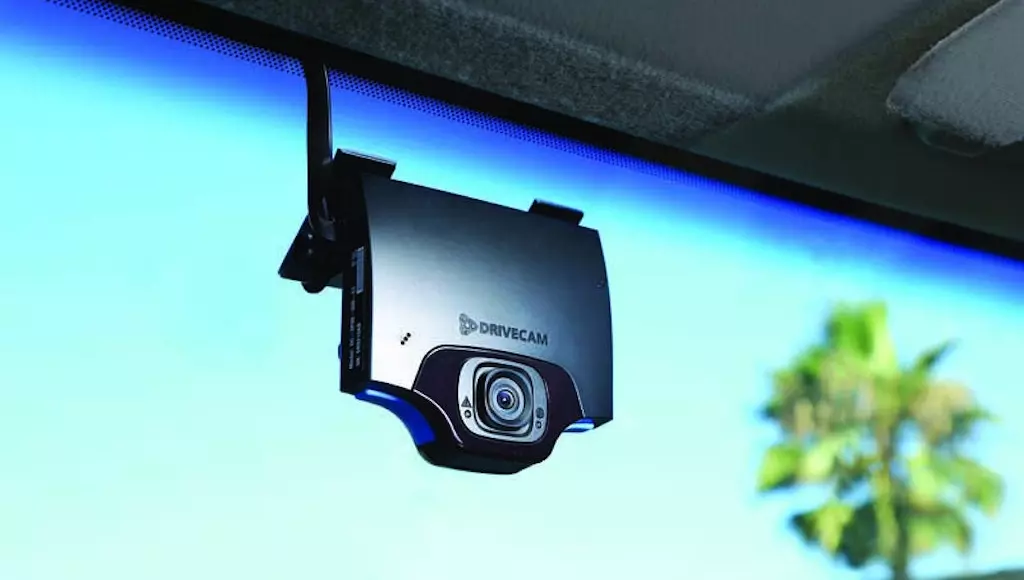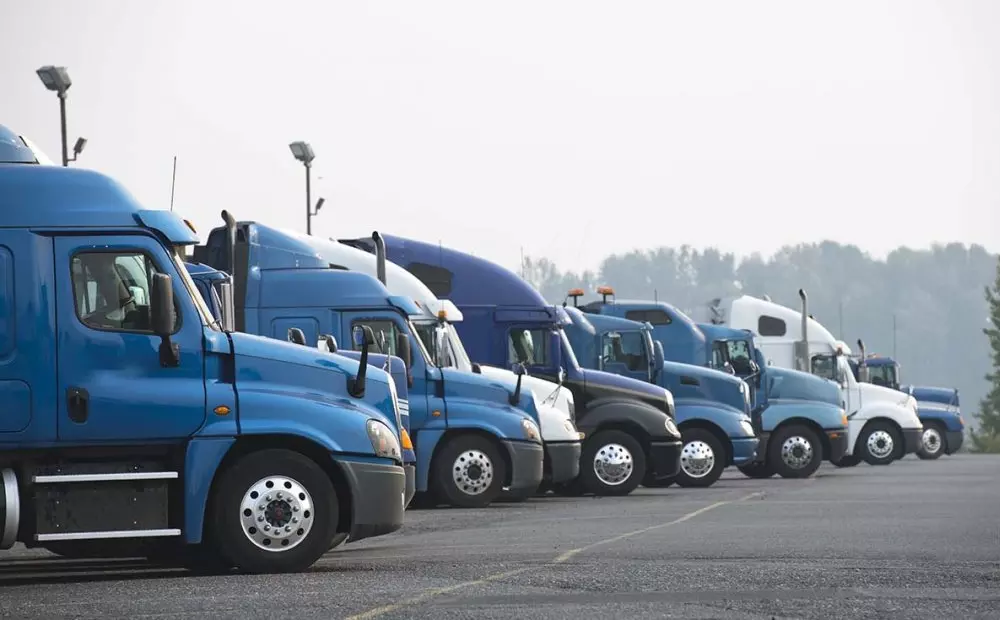Technological advancements in the trucking industry have improved several operational, safety, and security aspects. Trucking companies have rapidly implemented new solutions in the last few decades to increase visibility into their daily operations and eliminate several safety concerns.
Some of these solutions include the mandate of electronic logging devices (ELDs) to track various metrics (engine performance, miles traveled, and location) and regulating a driver’s Hours of Service (HOS) to prevent fatigue and reduce safety hazards.
One of the newer solutions trending in the industry is driver-facing cameras. Driver-facing cameras are telematics systems that are installed inside the truck cab and actively monitor driver and truck behavior. Not only do they enhance driver safety, but they also help to monitor driver compliance.
In this article, we’ll explain in detail how driver-facing cameras work and share their advantages and disadvantages. We’ll also talk about their legality in different states and provide a simple implementation guide for companies looking to install driver-facing cameras in their trucks.
What Are Driver-Facing Cameras?
Driver-facing cameras are high-definition telematics systems installed in truck cabs to monitor driver and truck behavior. These cameras are generally positioned as high as possible on the driver’s side or in the center of the windshield close to the wiper sweep zone to capture their face, head, and upper body.

The newest models feature a wide-angle lens with zooming capability, allowing for a better view of the semi-truck cabin. These cameras are also equipped with AI sensors that can analyze facial cues and eye movements to send real-time alerts and warnings to drivers and fleet managers if they exert any unusual behaviors, such as drowsiness or distraction.
Many trucking companies use driver-facing cameras for driver training. Others integrate them with advanced driver assistance systems (ADAS) and electronic logging devices (ELDs) to generate more driver data for performance and incident analysis to enhance safety and mitigate risks.
Unlike other innovations in the trucking industry, driver-facing cameras are considered a double-edged sword. On one hand, these telematics systems offer various benefits like improved communication, increased hazard awareness, reduced crime risk, and better driver behavioral practices.
On the other hand, continuous monitoring can influence driver perceptions, invade their privacy, and even increase stress and anxiety levels by simulating a micromanaged work environment.
How Do Driver-Facing Cameras Work?
Driver-facing cameras have the ability to detect facial cues and motion as they are equipped with multiple advanced sensors. For instance, the camera can detect if a driver is blinking slowly showing signs of fatigue, or if a mobile phone is being used while the vehicle is in motion.
What enables such features is the use of image or video capture technology to record the driver’s face and upper body. Using real-time footage, trucking companies can analyze driver actions and teach machine learning models to detect specific undesirable behaviors or patterns, such as aggressive driving, road rage, drowsiness, and distraction, and compare them with normal or safe behaviors.
Additionally, drivers will be alerted or notified by a driver-facing camera via its speakers if they trigger certain behavioral patterns such as closing their eyes for more than two consecutive seconds while operating a truck.
This not only corrects poor driving behaviors but also prevents potential accidents on the road. With this technology, trucking companies can improve road safety significantly by enforcing best driving practices and ensuring more proactive decision-making based on the driver’s state and behavior.
Depending on how the system is set up, the recording data collected is either stored onboard the vehicle or transmitted to a cloud/server for reporting and analysis.
Legality of Usage
Driver-facing cameras are legal in the United States and some trucking companies have them installed in all of their commercial vehicles for safety and monitoring purposes.
However, when they do, trucking companies must inform drivers that they’ll be recorded while operating trucks and also provide an explanation. Many jurisdictions have certain restrictions on using driver-facing cameras due to privacy concerns.
It’s important to have the driver’s explicit consent before installing one in their truck or making them drive a vehicle that is equipped with one. Secondly, companies must follow state or federal regulations regarding how much behavioral data they can gather and what information they have to share with drivers.
Unfortunately, data protection and privacy regulations vary considerably across different countries and regions. Therefore, trucking companies must familiarize themselves with specific laws and regulations regarding driver-facing cameras to ensure compliance when recording and managing driver data.
Which Companies Use Driver-Facing Cameras?
The use of driver-facing cameras also depends on the trucking company’s policies. Not every carrier is on board with this solution due to potential privacy invasion as the cameras continuously record them inside the cab. This can lead to added stress and discomfort for truck drivers, as alluded to earlier.
Below, we’ve listed some of the biggest trucking companies operating in the United States on having driver-facing cameras in their trucks. Please note that this list is not exhaustive and may not be up to date, as companies may change their policies. It’s always best to check directly with the trucking company beforehand.
| Company | Driver-Facing Cameras | Additonal Remarks |
| Schneider | Yes | |
| Freymiller | Yes | |
| Swift | No | |
| Roehl | Yes | |
| TMC | Some | Some of their trucks |
| Werner | Yes | |
| UPS | Some | Newer trucks |
| J.B. Hunt | Yes | Currently in progress |
Advantages & Disadvantages of Using Driver-Facing Cameras
Driver-facing cameras offer several unique benefits to drivers and fleet managers. However, they’re not without a few drawbacks. Learning about the advantages and disadvantages can help trucking companies and drivers make more informed decisions regarding its implementation or acceptance of use.
Advantages
Below are the key advantages of using driver-facing cameras in trucks:
- Enhanced Safety: Driver-facing cameras can detect facial cues and alert drivers when they’re drowsy, distracted, or engaging in unsafe driving behaviors. This can help truckers avoid or lower their risk of getting into an accident, thus, keeping the driver and those around them safe.
- Insurance Benefits: Some insurance companies offer incentives or premium discounts to companies that equip their fleet with driver-facing cameras to improve safety. Trucks equipped with cameras are generally less likely to get into accidents due to driver negligence.
- Training: Driver-facing cameras can double as a training tool and provide real-time feedback to drivers learning to operate semi-trucks. Conversely, they can help fleet managers and trainers understand drivers’ behaviors and adjust their programs accordingly.
- Risk Mitigation: Drivers operating freight vehicles with driver-facing cameras know they’re being monitored, therefore, they’re safer and more vigilant. Moreover, they’re more likely to adhere to company policies and regulations since the camera will provide evidence of any actions or behaviors that go against standard practices.
Disadvantages
Below are some of the main disadvantages of equipping trucks with driver-facing cameras:
- Privacy Concerns: Privacy is the biggest concern associated with driver-facing cameras. These devices continuously capture and monitor the actions and behaviors of truck drivers. Therefore, many drivers believe they’re intrusive, especially during off-duty hours. Some feel like they’re being micromanaged, and having eyes on them at all times affects their performance.
- Data Management: Capturing and storing hours of high-quality cabin footage daily requires substantial storage space, especially for companies with large fleets. Hence, companies must invest in physical or cloud storage to use these devices. Moreover, they need the right solutions and expertise to analyze and manage driver data while preventing unauthorized access, manipulation, and other privacy or security issues.
- Technical Limitations: Like any image or video-capturing device, driver-facing cameras aren’t immune to technical limitations, such as poor visibility and low lighting. As a result, some actions and behavior they capture can be rendered inaccurate or ineffective. For example, low lighting can affect the camera’s ability to capture facial cues accurately at night and raise false drowsiness alarms.
How to Implement Driver-Facing Cameras in Your Fleet
Every trucking company wants to reap the benefits of driver-facing cameras. However, they must first assess their tech capabilities and overcome the hurdle of driver acceptance.

Below are some tips and strategies that trucking companies can use to ease their transition when implementing driver-facing cameras in their fleet.
Consider Event-Based Recording
One of the biggest privacy concerns driver-facing cameras raises is continuous recording. Therefore, the first step companies can take to encourage driver acceptance is only recording them during service hours.
Even then, the surveillance should be event-based or triggered by unusual activity or behavior, such as hard braking, phone use, drowsiness, and similar. Selective recording can also save terabytes of storage space in the long run.
Address Concerns of Drivers Immediately
Trucking companies should maintain an open-door policy to address concerns of drivers over driver-facing cameras. Doing so can improve transparency and improve driver satisfaction, both crucial factors that can enhance productivity, safety, and performance.
Since drivers are at the forefront of this implementation and are also directly affected, companies must listen to and value their feedback to succeed. Enforcing adoption can result in resentment and high turnover.
Provide Awareness Training Regularly
Trucking companies should also proactively provide awareness training to both new and seasoned drivers. Since drivers are the focus of these cameras, they must be aware that they’re being recorded.
Moreover, they need to understand the importance and benefits of recording from a safety viewpoint. Companies need to assure their drivers that personal behaviors and actions unrelated to truck operations would not be recorded or used against them.
Set Fair Policies
Trucking companies must ensure the footage they collect is used ethically and fairly. Moreover, they need to take the necessary steps to protect driver data and privacy as per local and state regulations.
They should also share their data management policies and processes with their drivers and ensure that compliance with these standards is upheld at all times. Many companies use driver-facing cameras to save money on insurance premiums.
Since they’re using their drivers’ data to reduce this additional expense, it’s only fair that drivers are compensated accordingly for agreeing to be recorded.
Practice Full Transparency
Finally, to ensure full transparency, trucking companies should provide drivers access to their recordings. Doing so can help them understand their actions and behaviors in order to improve them accordingly.
Another way to enhance transparency is to notify drivers when they’re being recorded. This can prompt them to correct any unsafe behavior and improve safety.

Get Free Course Access
If you enjoyed the article, don’t miss out on our free supply chain courses that help you stay ahead in your industry.

Andrew Lin
Co-Founder & Writer
at freightcourse
About the Author
Andrew is a multi-business owner with over 12 years of experience in the fields of logistics, trucking, manufacturing, operations, training, and education.
Being the co-founder of freightcourse has given him the ability to pursue his desire to educate others on manufacturing and supply chain topics.
Follow us